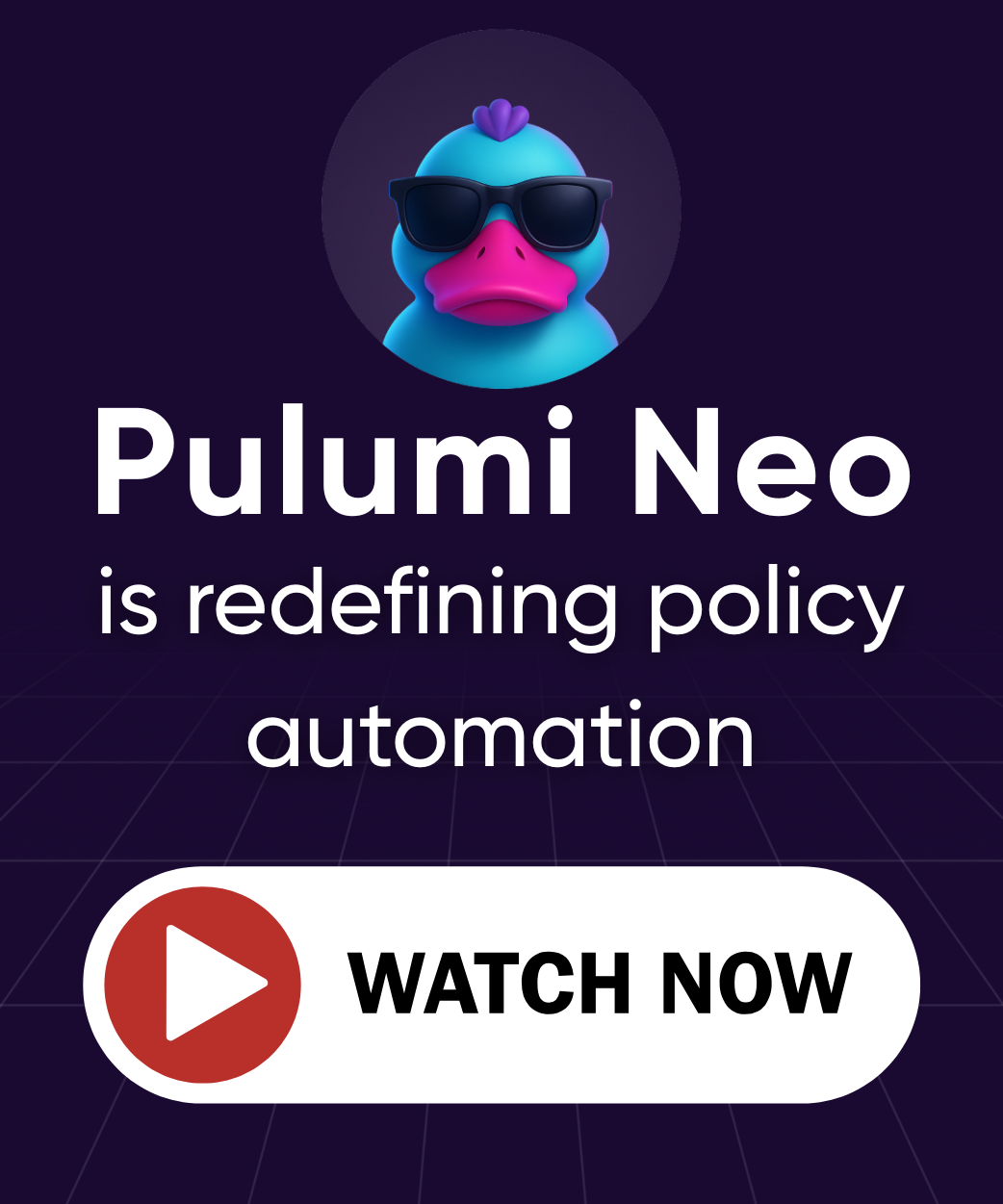Governance as an Enabler: Scaling Safely and Confidently
Posted on
In previous articles in this series, we’ve explored how platform engineering transforms infrastructure chaos into consistent provisioning, empowers engineering teams through self-service infrastructure, optimizes workflows, embeds security directly into your platform, and provides observability as a superpower. Each pillar builds upon the previous ones, creating a cohesive foundation that accelerates innovation and productivity.
But as your platform scales, new challenges inevitably emerge. You’ve empowered engineering teams with self-service infrastructure, streamlined workflows, and embedded security directly into your platform. But as your platform scales, new challenges emerge: How do you ensure consistency, compliance, and cost control without slowing your teams down?
In this article, we’ll explore how Platform Engineering transforms governance from a manual, bureaucratic process into an automated, built-in enabler, helping your organization scale safely and confidently. By embedding governance directly into your platform, you can maintain control, ensure compliance, and manage costs effectively, all while preserving the autonomy and speed your engineering teams have come to expect.
The Problem: Governance as a Manual Bottleneck

With increased team autonomy and self-service capabilities, how do you ensure consistency, compliance, and cost control across your entire organization?
Governance often feels like a necessary evil: manual, bureaucratic, and slow. Application teams see it as red tape, while operations teams struggle to maintain control. Manual compliance checks, lengthy audits, and unclear or inconsistent policies create friction and frustration. Teams may bypass governance processes entirely, leading to shadow IT, inconsistent resource configurations, and hidden risks.
The consequences of manual, bureaucratic governance are clear:
- Increased compliance risks and audit failures: Without automated enforcement, compliance becomes reactive and error-prone, increasing the likelihood of regulatory violations and audit findings.
- Unpredictable cloud costs and budget overruns: Without clear guardrails, self-service infrastructure can lead to resource sprawl, wasted resources, and unexpected cloud bills.
- Reduced team autonomy and slower innovation: Manual governance processes reintroduce bottlenecks, slowing down deployments and undermining the agility your platform was designed to achieve.
The Solution: Embedding Governance into Your Platform

Governance should live inside your platform, not off to the side as a separate process. To make that happen, build these four capabilities into your IDP:
Policy-as-Code for Automated Compliance: Declare rules (like approved regions or required tags) as code. The platform enforces them whenever infrastructure is created or updated, so compliance happens automatically.
Platform-Level RBAC for Permission Boundaries: Decide who can act on projects, stacks, and templates before any cloud credentials run. This early check prevents unauthorized requests from ever reaching cloud provider.
Audit Logs and Drift Detection for Real-Time Visibility: Record every deployment, who ran it, and what changed. Continuously compare live infrastructure to the desired state in code. If someone bypasses approved processes, the platform flags it and alerts the team.
Resource Lifecycle and Deployment Controls: Automatically retire idle environments after a set time (Resource TTLs) so forgotten test clusters don’t rack up bills. Also if needed, gate production changes behind lightweight approval workflows. Routine dev or staging updates roll out instantly, but high impact production changes wait until a reviewer signs off.
Let’s dive into each of these.
A. Policy-as-Code for Compliance and Operational Standards: Automating Trust and Consistency
An engineering team is ready to launch a new service. They’ve tested it and everything looks good, until the deployment fails. Not because of a bug. Because it’s targeting an unapproved cloud region.
Now they’re stuck. A compliance review kicks off. Slack threads fly. A ticket gets filed. What should’ve been a smooth release turns into a delay, all because of a policy someone missed.
Policy-as-code prevents this.
When teams deploy something that breaks the rules (like using an unapproved region), the platform blocks it automatically. The error shows up right away, with a clear message. Nothing gets provisioned, and nobody has to file a ticket.
If you’re already using intent-based components (“I need a Java service with Kafka and PostgreSQL”), most details are handled for you: tags, regions, naming. But people still override things. That’s why policy-as-code matters.
Think of it as a safety net. A menu of components handle the defaults. Policies catch anything that slips through. Together, they keep your platform consistent without slowing anyone down.
B. Role-Based Access Control (RBAC): Balancing Autonomy and Control

As your platform grows, managing permissions manually gets messy. If an engineer needs to fix a production issue but doesn’t have access, they file a ticket and wait, sometimes for days. Give developers too many rights, and they might change production by accident. Both options slow teams down and increase risk.
The fix is an RBAC model built into your platform. First, the platform decides who can deploy, who can publish components, and who can manage templates. This check runs before any cloud credentials are used, so invalid requests get blocked early. Second, the cloud IAM layer controls which API calls are allowed, like creating an EC2 instance or updating a database.
This pairs well with a two-level intent-based approach. Teams describe what they need (“I want a Python Lambda with an SQS queue”), and the platform enforces access only for users with the right scopes. Everyone gets just enough access to do their job, no more, no less.
A Platform with RBAC makes permissions clear, reduces mistakes, and keeps everything auditable. Devs move fast, spinning up resources as needed, while strong guardrails stay in place. The result is a scalable, least-privilege model that balances autonomy and control, so your organization can grow safely.
C. Auditability, Traceability, and Drift Detection: Ensuring Visibility and Trust

An ops engineer spots a production database misbehaving. A quick check shows someone changed its configuration outside the approved workflow. Without an audit trail or drift detection, the team scrambles to figure out who made the change and when. Meanwhile, the incorrect setting stays active, posing a security and compliance risk. No one can fix it without guessing.
A platform with audit logs records every action: who deployed, when, and what changed. Drift detection watches live infrastructure and compares it to the desired state in code. If someone bypasses the workflow (say, editing a database setting in the console), the platform flags it and alerts: “User Alice changed max_connections on prod-db-01 at 3:42 PM, which no longer matches the expected state.” Now the team can pinpoint the change, talk to the right person, and revert or update the code, restoring consistency in minutes, not hours.
Together, audit logs and drift detection give you real-time visibility into every change. You stop playing detective. You see who did what, when, and how it deviated from code, all in one place. That transparency speeds audits, catches unauthorized changes fast, and builds trust across teams. With automatic traces of every change, your platform scales without surprises.
D. Resource Lifecycle and Deployment Controls: Scaling Responsibly and Safely
An engineer spins up a test environment, then walks away. Another pushes a change straight to production without review. The abandoned test cluster runs up cloud costs; the unreviewed prod tweak risks an outage. Without automation, both lead to wasted spend and stressful cleanups.
A modern platform handles this with ephemeral environments where possible and approval gates where it matters.
In dev and staging, engineers can move quickly. They can create test or preview environments, often tied to users or pull requests, that shut down automatically after a set time. TTL rules keep things tidy without manual cleanup.
Production, by contrast, is gated. High-impact changes, like modifying a database schema or adjusting a load balancer, require approval. Before anything is provisioned, sign-off is required. Every approval (or denial) is logged: who, when, and why.
This setup keeps development fast and flexible, while making production changes deliberate and auditable. Your platform stays clean, cost-effective, and safe without getting in the way.

Real-World Example: Governance Enablement in Action
An engineering team opens a pull request for a new customer-facing service. The platform spins up a preview environment using a template with secure defaults, pre-approved modules, and policy checks. CI runs tests and policy checks in preview (names, regions, encryption, compliance) so the team catches issues early. If a rule fails (say, an unencrypted database), the PR fails before it reaches main. After the PR merges to main, it deploys to production, confident all policy validations have passed.
Idle QA environments shut down after 48 hours, so forgotten clusters don’t rack up bills. Sensitive production changes, like updating a load balancer or altering a critical schema, are carefully reviewed via pull request. Once approved, the platform deploys automatically and logs every action. Drift detection flags console edits, letting the team revert or update code in minutes.
Result: Governance becomes an invisible safety net. Engineers move fast, knowing policy-as-code, RBAC, TTL cleanup, approval gates, and change tracking catch mistakes. Ops stays in control without firefighting or chasing orphan resources. The platform scales safely, balancing freedom with built-in guardrails.
Metrics: Measuring Governance Enablement
To ensure your governance practices truly empower your organization, it’s essential to track clear, actionable metrics. These metrics help you understand the effectiveness of your governance processes, identify areas for improvement, and ensure governance remains frictionless and enabling:
Time Spent on Manual Compliance Checks and Audits: Measure how much time your teams spend manually verifying compliance or performing audits. Effective governance automation should significantly reduce this overhead, freeing teams to focus on higher-value tasks.
Number of Compliance Violations or Audit Findings: Track how frequently compliance violations or audit issues occur. Effective governance should reduce these incidents, demonstrating that automated policies and guardrails are working as intended.
Cloud Cost Predictability and Budget Adherence: Monitor how accurately your cloud spending aligns with forecasts and budgets. Good governance practices, such as automated tagging, resource lifecycle management, and cost controls, should improve predictability and reduce unexpected cost overruns.
Engineering Team Satisfaction with Governance Processes: Regularly survey engineering teams to gauge their satisfaction with governance processes. High satisfaction indicates that governance is enabling rather than hindering their workflows.
Tracking these metrics helps you continuously improve your platform’s governance practices, ensuring they remain effective and frictionless.

Pulumi and Governance Enablement
Pulumi provides built-in governance features that help you scale safely and confidently, embedding compliance, consistency, and control directly into your platform:
CrossGuard (Policy as Code) Define and enforce compliance and operational policies automatically. CrossGuard checks every resource against your organization’s standards before deployment, preventing non-compliant resources and reducing manual audits.
Role-Based Access Control (RBAC) and Teams Manage permissions with precision. Pulumi’s RBAC ensures teams get exactly the access they need, no more, no less, so developers can move quickly within clear boundaries and ops can reduce risk.
Audit Logs and Drift Detection Capture a full history of every change and compare live infrastructure to the desired state in code. Audit logs simplify compliance reviews, drift detection spots unauthorized edits, and teams can fix issues in minutes.
Time-to-Live (TTL) Stacks / Ephemeral Environments Spin up short-lived environments for testing or previews. You can assign a TTL to any stack so it shuts down automatically after a set period. That keeps forgotten test resources from racking up costs and ensures your platform stays clean.
By leveraging Pulumi’s governance features, including CrossGuard, RBAC, audit logs, and TTL stacks, your platform becomes a powerful enabler. You automate compliance, maintain consistency, and empower engineering teams to innovate quickly and safely.
Conclusion: Governance as a Platform Feature

Governance doesn’t have to slow you down. By embedding governance directly into your platform, you empower engineering teams to innovate quickly while ensuring compliance, consistency, and control. Instead of manual checks, governance becomes automatic, transparent, and frictionless, enabling your organization to scale safely and confidently.
Your engineering teams gain autonomy and speed, your operations teams gain visibility and control, and your organization gains the confidence to innovate at scale.
You’ve now seen all six pillars of a modern internal developer platform—provisioning, self-service, developer experience, security, observability, and governance. If you’d like to see how Pulumi makes building and running a platform like this simpler, check out Pulumi IDP.

